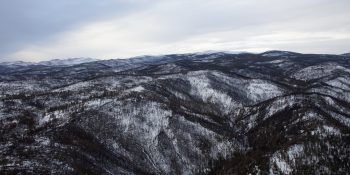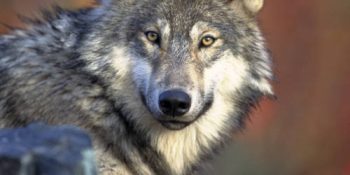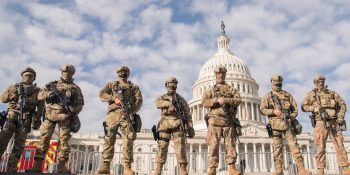
SPREAD THE NEWS
COMMENT, Like, Follow & SHARE @I70Scout
CURRENT EDITION
WEATHER & TRAFFIC PUZZLES RECENT NEWS ADVERTISE WITH US

The Colorado Department of Public Health and Environment launched a new call center for the public to ask questions specifically about the COVID-19 vaccine. Now through the end of January, the vaccine call center is open Monday through Friday, 9 a.m. – 10 p.m., Saturday and Sunday, 9 a.m. – 5 p.m. Beginning Feb. 1, hours will extend to 24 hours a day, seven days a week. The new toll-free number is 1-877-CO VAX CO (1-877-268-2926).
Vaccine call center staff are trained to answer COVID-19 vaccine-related questions, provide information about vaccine providers across the state, and give general information about COVID-19. Fifty operators are available to answer calls and can provide information in multiple languages. Staffing will expand as call volume requires.
The 1-877-CO VAX CO number is the go-to for vaccine-related questions for the general public, but they should continue using the Colorado Health Emergency Line for the Public (COHELP) and 2-1-1 Colorado for general information about COVID-19, such as the number of cases in Colorado, the list of symptoms, or how you can protect yourself.
COHELP can be reached Monday – Friday, 9 a.m. – 10 p.m. and Saturday and Sunday, 9 a.m.- 5 p.m. by dialing 303-389-1687 or 1-877-462-2911.
2-1-1 Colorado Community Resource Navigators are available to help by phone, Monday – Friday from 8 a.m. – 5 p.m. and can be reached by dialing 2-1-1 or toll-free 866-760-6489, or by visiting 211Colorado.org.
Right now, Colorado is in phase 1A and 1B above the dotted line of its vaccine distribution plan, which means frontline health care workers, first responders, and people age 70 and older are eligible to receive the vaccine. Until the vaccine is widely available and used, and community immunity is achieved, it is important to continue taking precautions to slow the spread of the virus, like wearing masks, avoiding large gatherings, and practicing physical distancing. More information about Colorado’s vaccine efforts is available at covid19.colorado.gov/vaccine.
Continue to stay up to date by visiting covid19.colorado.gov.
Both the Byers and Strasburg High School boys and girls commence the COVID-19 Season B tonight on the hardwood, and while visitors into gyms are limited, both sets of contests can be viewed online.
Byers travels to Kiowa tonight to face off with the host Indians. The varsity girls game is slated to start at 5 p.m. with the varsity boys to follow at 7 p.m. Both games are available to view on the Kiowa Athletics YouTube channel at: https://www.youtube.com/channel/UCBrHhgJmTULn01bO-QMj49w.
Both Strasburg varsity teams host Weld Central this evening with the Lady Indians to tip off at 5 p.m. and the boys at 7 p.m. Online access for both games is available at https://youtu.be/0yey-ah0ulA or by going to the Forever Indians of Strasburg High School page on Facebook and clicking on the link for the YouTube broadcast.
For coverage of both schools’ games and other basketball games and wrestling matches contested through Thursday, Jan. 28, see the Feb. 2 edition of The I-70 Scout.
These great horned owl chicks went to the Rocky Mountain Raptor Program for rehab after their nest tree was cut down.
DENVER – Ten recipients of Colorado Parks and Wildlife’s third annual Wildlife Rehabilitation Grants have been announced. The grants are offered by CPW to support wildlife rehabilitation efforts across the state.
“These ten grants reach across the state,” said CPW Director Dan Prenzlow. “They include investments to expand rehabilitation facilities for the long-term and funding to help keep existing facilities open to meet public demand.”
“We had more than $48,000 in funding requests but only $16,200 in funding available,” said Jim Guthrie, Program Coordinator for the Wildlife Rehabilitation Grants Program. “There’s a big need out there. A lot of Colorado rehabbers run on shoestring budgets. They put in tremendous personal effort for the love of helping animals recover from accidents or injury.”
“The rehabilitation of Colorado’s wildlife species often happens quietly, by a relatively few number of qualified and licensed professionals around the state,” said John Gale, Chair of the Wildlife Rehabilitation Grants Board. “They provide critical services across a diversity of species – large and small – often at great personal expense. Colorado’s grant program provides important support to wildlife rehabilitators, increasing resources and allowing them to help more animals.”
The work supported through this year’s Wildlife Rehabilitation Grants includes:
The grant program was created through House Bill 17-1250. Funding for the grant program comes primarily from the nongame tax check-off program, along with fines from nongame wildlife-based offenses and interest income. For the first $250,000 raised annually, 10 percent is allocated to the Wildlife Rehabilitation Grant Program, which aims to provide funding specifically for wildlife rehabilitation centers. For many rehabbers, this kind of funding fills a critical gap.
“On behalf of my fellow committee members and Colorado Parks and Wildlife professionals,” said Gale, “I want to extend our appreciation to Colorado taxpayers for their generous donations and continued investment in this highly successful grant program.”
Applications for Wildlife Rehabilitation Grant Awards are due each year in early November. For more information on the grant program and application materials, please visit the Wildlife Rehabilitation Grants page.
2020 Wildlife Rehabilitation Grant Awards
Rocky Mountain WildHeart – Colorado Springs
Lynette Carson – Beulah
Colorado BatCREW – Conifer
Emily Davenport – Sedalia
North Park Wildlife Rehabilitation
Wild Bird Rescue – Englewood
Shellee Lawson – Bailey
Rocky Mountain Raptor Program – Fort Collins
SonFlower Ranch Wildlife Rehabilitation – Brighton
Bill Main – Colorado Springs
Caption for photos below: This red-tailed hawk was struck by a vehicle and had severe spinal and head trauma when it was brought to the Rocky Mountain Raptor Program for rehab. With time and care it was released back to the wild again.

DENVER – Colorado Parks and Wildlife’s latest podcast episode discusses how to get in front of backcountry danger in the winter.
Click here to listen to this episode. All episodes of Colorado Outdoors can also be found on your favorite podcast platforms such as Apple Podcasts, Google Podcasts, iHeartRadio, Spotify, Pandora and more.
Outdoor agencies across Colorado have seen an increase in park visitation and off-grid winter recreation. Recreating in the backcountry requires certain precautions and equipment to ensure a safe outdoor experience.
Podcast host Mark Johnson talks with two CPW experts on winter backcountry recreation. Ben Plankis is the trails coordinator for the northeast region of the agency and Michael Haskins is a park ranger at Chatfield State Park who assist backcountry search and rescue teams with rescue missions.
For more information on backcountry winter safety courses, visit colorado.com/WinterBackcountrySafety and take the Colorado Backcountry Winter Safety Pledge.
TOPIC LIST:
2:40 – what do people need to consider when they head up into the high country
3:56 – know before you go – Check Avalanche and Weather Forecast atcolorado.gov/avalanche
4:37 – equipment to keep you safe should you be caught in an avalanche
5:40 – avalanche awareness classes
6:38 – what to know if new to Colorado
7:28 – what should you look for when in potential avalanche terrain
8:05 – advice for experienced backcountry visitors
9:40 – snow conditions this year and more people venturing out in the backcountry
10:10 – guidelines for heading up into the backcountry
11:38 – easy access into the backcountry can lead people into a false sense of security
12:30 – what to do/know/have if you need help
15:20 – COTREX trails app and cell phone GPS capabilities
The Colorado Division of Fire Prevention and Control (DFPC) is taking part in Community Risk Reduction (CRR) Week. CRR Week is a grass-roots effort by an informal group of fire safety professionals from across the nation. The goal of CRR is to reduce the occurrence and impact of emergency events for both community members and emergency responders.
CRR Week 2021 will take place Monday, January 18, 2021, through Sunday, January 24, 2021. It will kick off on Martin Luther King Day, which is a national day of service.
The idea is to help promote the awareness of CRR within the fire service by having a week where everyone can do CRR programs and demonstrate its importance to the fire service.
Throughout the week, DFPC will publish one video a day, discussing the importance of community risk reduction.
Follow CRR on social media via YouTube, Facebook and Twitter @CRRweek.
Learn more at crrweek.org

A herd numbering upwards of 2,000 elk was seen on Jan. 7 when CPW was surveying this unit to look at population demographics and how the animals fared following the Cameron Peak Fire (photo courtesy of Jason Clay/CPW)
FORT COLLINS, Colo. – Despite burning 208,913 acres across Larimer County from August through December, it does not appear the Cameron Peak Fire had short-term impacts on the elk herds in Larimer County.
Colorado Parks and Wildlife biologist Angelique Curtis took flight in a Bell 407 helicopter to survey the elk herds for the first time since the fire, which is the largest ever to burn in Colorado. She classified roughly 4,200 elk in the seven hour flight on Thursday, Jan. 7.
Curtis used satellite GPS collars as a part of a new study launched one year ago to help locate the herds across the Laramie River Valley, Red Feather Lakes and the Cherokee State Wildlife Area.
“The elk that we saw today actually summered up where the Cameron Peak Fire burned in the Comanche Peak Wilderness, Long Draw area and up in Dead Man,” Curtis said. “What we saw today is that the fire didn’t inhibit them from actually getting to their wintering ground and we saw some pretty good calf recruitment.
“We did see healthy animals on the ground, so the fire didn’t seem to affect them health wise.”
Depending on how hot the fire may have burned across the region, the possibility exists that productive habitat will be there for wildlife as early as this spring. The amount of moisture we receive over winter will help play a role in that. As we progress through winter and into spring, biologists and forest ecologists will have a better understanding of the outlook of the post-fire burn area.
Some of these herds numbered in the thousands, making it difficult to count the animals and record their sex and age class. Curtis relies on the pilot to not only maintain human safety while in the air, but also keep in mind the well-being of the wildlife down below.
“In order for us to properly classify them, the pilot has to go in there and actually carve off a group of 35 to 40 elk at a time and then his job is to keep those elk separated from the main herd,” Curtis said. “So when we are doing this it is definitely the pilot and his skills that get us the data we need.”
When approaching from the sky, the pilot first circles the herd to look for hazards before lowering in closer to break them up into smaller groups. This video from inside the cockpit shows that operation.
“A lot of animal welfare goes into it,” said Cameron Stallings, Chief Pilot from Aero Tech, Inc. “You don’t want to run them through fences or over cliffs or run them too long, things like that. Flying in the mountains when it is windy is difficult and there are things you have to consider there.”
This herd is classified by CPW in its Data Analysis Unit (DAU) E-4. The last time biologists surveyed this herd from the sky was in 2006.
“The purpose of these flights is to get a classification,” Curtis said. “Classification is the cow, calf and bulls that we see on the ground and that is entered into a model and then from there we use the model to produce population estimates and to decide how many licenses we need to give out each year.”
This particular herd does not have a model. Population models are used to help CPW manage populations within the objective ranges, which include setting annual hunting license allocations. The Habitat Partnership Program(HPP), funded by revenue from the sale of big game licenses, assists CPW to meet game management objectives for deer, elk, pronghorn and moose.
It was Larimer County HPP funds that paid for the GPS satellite collars for this elk study. Funds from the Rocky Mountain Elk Foundation were used towards the aerial capture efforts to get the collars deployed on the elk.
Now those collars are playing a crucial role in obtaining the data wildlife managers need. They not only assist biologists in helping locate the herds to classify them, but document movement patterns, habitat use, reproduction success and can help identify mortality causes.
“This is the first year of data and I’ll probably need another three or four years of data in order to build the model properly, but I’m getting an idea of how many elk are out on the landscape and how the elk are moving through the landscape,” Curtis said.
Potential long term effects from the fire are not yet known. It is a good sign the elk were able to make it down to their wintering grounds, but biologists are curious what next summer will bring for the herds.
“It is going to be interesting to see when they migrate back to their summer range, how that is going to affect their movement patterns and if they are going to go to the same locations as they did the previous year,” Curtis said.
Watch how biologists tracked elk movements during the Cameron Peak Fire
Photos Below (courtesy of Jason Clay/CPW)
Left: Wildlife biologist Angelique Curtis (left) and pilot Cameron Stallings (right) point out an elk herd as they fly across western Larimer County
Right: An aerial view of portions burned from the Cameron Peak Fire

DENVER (AP) — Colorado could have to navigate years of pending litigation over the Trump administration’s delisting of the gray wolf from the Endangered Species Act as it tries to enact its own voter-approved initiative to reintroduce the predator to the state, top wildlife officials were told Thursday.
Lisa Reynolds, the state’s first assistant attorney general, told the Colorado Parks and Wildlife Commission her office expects years of litigation over the federal delisting of wolves, which took effect Jan. 4. That delisting handed over management of wolves in Colorado from the U.S. Fish and Wildlife Service to the state.
Indeed, two coalitions of advocacy groups asked the U.S. District Court in Northern California on Thursday to overturn the U.S. government decision.
Though delisting made it easier for Colorado to act, legal uncertainty over the future of the wolf’s endangered status _ even a potential reversal of the administration’s decision _ could hand authority back to the federal government, severely complicating the state’s ability to implement the proposition, Reynolds said.
Colorado voters narrowly approved Proposition 114 in November. It requires the reintroduction of the gray wolf, which was hunted, trapped and poisoned into extermination here in the 1940s, be underway by Dec. 31, 2023, on public lands in the sparsely populated Western Slope of the Continental Divide.
Dozens of rural county commissions and agricultural, business and sportsmen’s groups opposed the initiative. They cited a threat to livestock and to a $1 billion hunting industry based on elk, deer and moose that supports 25,000 jobs.
The measure passed thanks to votes from the highly urbanized areas that line the Denver-Fort Collins-Colorado Springs metropolitan area.
Advocates see reintroduction in Colorado as a vital step in restoring the wolf to habitat stretching from the Canadian to the Mexican border. Wolves were reintroduced in the Northern Rockies in the 1990s. About 2,000 wolves are in Montana, Wyoming, Idaho, Oregon, Washington and northern California, and Colorado officials are consulting those states in its own planning, said Eric Odell, species conservative program manager for Colorado Parks and Wildlife.
A remnant population in the western Great Lakes region has since expanded to about 4,400 wolves in Michigan, Minnesota and Wisconsin. A small population of Mexican gray wolves remains protected in the Southwest.
At least two lone wolves and a small pack, likely from Wyoming’s Yellowstone National Park, have been sighted since 2019 in northwestern Colorado, Odell said. Opponents of the initiative said that shows wolves already are in Colorado and that reintroducing them is unnecessary.
Democratic Gov. Jared Polis has urged Colorado Parks and Wildlife to quickly implement the initiative. Dan Gibbs, executive director of the state Department of Natural Resources, challenged the commissioners on Thursday to get paws on the ground by 2022 or early 2023, well ahead of the proposition’s deadline.
“The voters have spoken. The directive is clear,” Gibbs intoned.
By spring or summer, state wildlife officials will start identifying donor populations and locations for reintroduction; slowly begin development of a management plan; and create procedures for settling claims by ranchers, farmers and others who lose livestock to or have property damaged by wolves.
Part of the effort will be led by a working group involving state and federal agencies such as Fish and Wildlife, the Bureau of Land Management and the U.S. Forest Service, as well as Native American tribes, said Reid DeWalt, a CPW assistant director.
Several witnesses implored commissioners to fully involve West Slope residents in the process. Managing their worries and expectations among residents still polarized over the issue is as great a task as any, Odell said.
“The greatest challenge to us is social and political, rather than biological issues,” he said. “That’s part of wildlife management.”

DENVER – Colorado Governor Jared Polis signed an Executive Order activating members of the Colorado National Guard to assist with the 59th Presidential Inauguration in Washington, D.C.
“Colorado will proudly do our part, joining 40 other states across our great nation in sending members of our National Guard to the nation’s capital for our country’s upcoming Presidential inauguration on January 20th. The presence of the Colorado National Guard and others will help ensure our nation’s capital and all Americans in attendance including those who call it home and members of our federal government are safe and protected during this peaceful transition of power that has occurred in our country for hundreds of years,” said Governor Polis.
Governor Polis is taking this action at the request of the Washington, D.C. National Guard. Colorado’s National Guard is made up of 5,600 brave and dedicated members which ensures that the State will continue to have protection at home while some of our members are sent to Washington. At this time, the State will deploy at least 200 members of the National Guard to Washington, D.C. and this is subject to change.
photo credit – MGN online

DENVER – The Colorado Division of Insurance (DOI), part of the Department of Regulatory Agencies (DORA), reminds Coloradans who need individual health insurance (meaning not from an employer) that the deadline to enroll in a health insurance plan for 2021 is Friday, Jan. 15, 2021.
People who enroll by Jan. 15 will have their health insurance start Feb. 1. Missing this deadline means that those who need coverage will have to wait until 2022, unless they experience certain events in their lives like marriage, birth of a child, divorce or loss of other health insurance (these are called “qualifying life events” that allow enrollment outside of open enrollment). Find more information about these events at Connect for Health Colorado’s website “When can I buy insurance?”
“Health insurance is always critical, but it’s especially urgent in 2021, as having health insurance will cover the costs for the COVID-19 vaccine,” said Colorado Insurance Commissioner Michael Conway. “And getting everyone vaccinated will let us beat this pandemic. As always, individual, ACA-compliant plans offer coverage for preventive care, routine care and prescription benefits. They have coverage to protect you and your family if you get sick or injured.”
Colorado individual health insurance consumers can enroll with insurance agents, directly with the insurance companies or through our state’s exchange, Connect for Health Colorado. They can enroll directly on the Connect website connectforhealthco.com, get help by calling 855-752-6749 or find in-person assistance through their statewide network of certified experts at connectforhealthco.com/person-help.
In addition, Connect for Health offers tools such as the Quick Cost & Plan Finder that can help you check if you are eligible for financial assistance and find a plan that fits your needs. About 70% of people applying qualify for financial help. Enrolling through Connect is the only way to receive financial help that can make health insurance more affordable.
According to Connect for Health Colorado, as of Jan. 6, nearly 172,000 had signed up for health insurance during this open enrollment, which surpasses last year’s total for open enrollment.